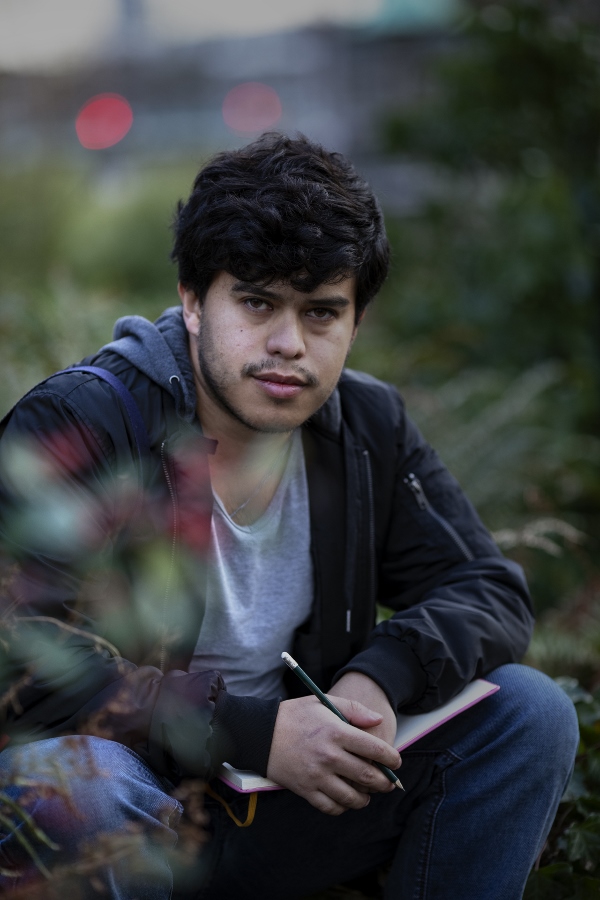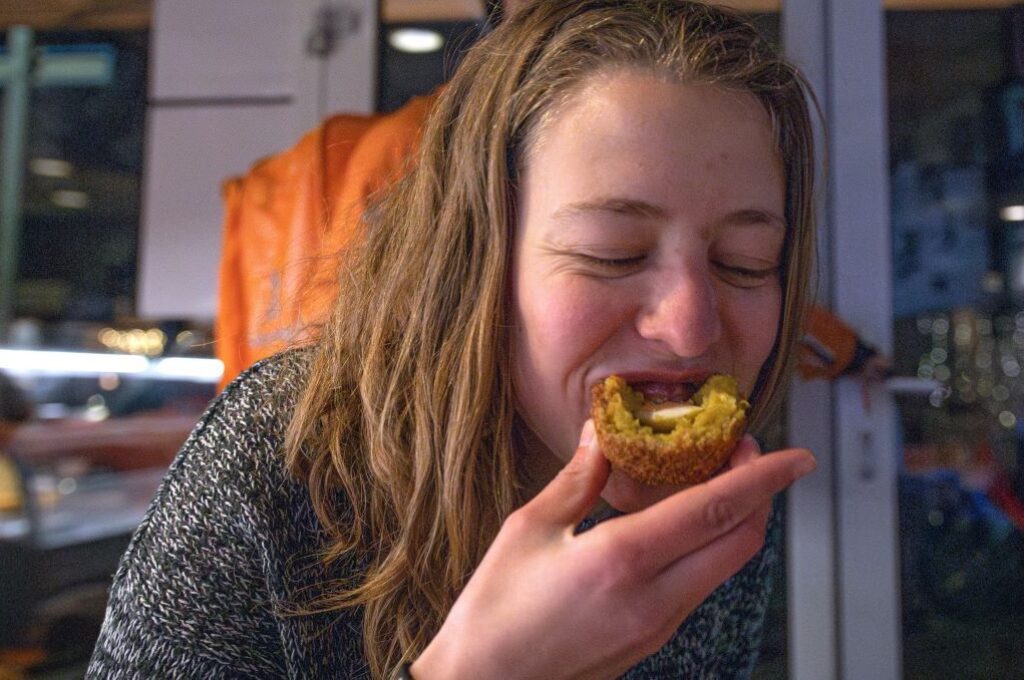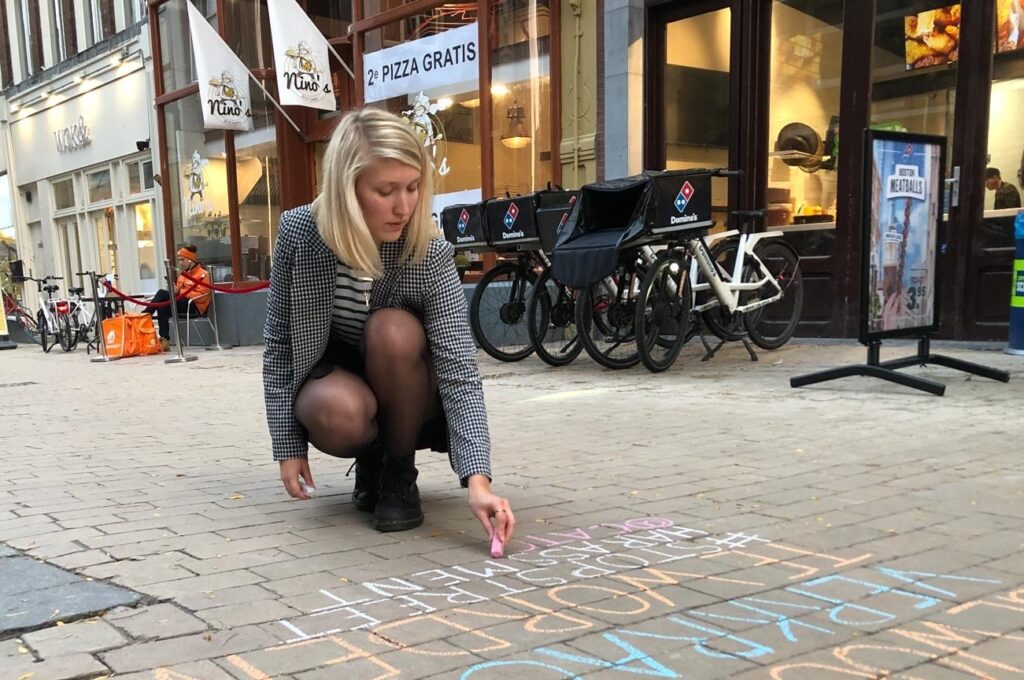In January Jorge Luis Barragán Castaño was awarded the George Verberg Stipendium, a grant of 10,000 Euros to realize his art project on botanical gardens. Will the value of famous paintings collapse like once the value of tulips?
‘I do not paint and draw in the traditional sense. My work revolves around thought and ideas. To me drawing is not in the first place a medium to create images, but rather a way of thinking with a pencil in your hand. You can compare that to doing a long division calculation. The writing of the numbers is a tool for thinking. It is necessary to find the solution. The equation on the paper is not a record, it is part of the thinking process. It’s the same way with drawing. At the very moment you draw a line, you are considering what the next one should be like.’

Ah, you’re a philosophical kind of artist.
‘My artwork is about asking questions about drawing. It’s meta art. Of course you could write an essay with words. But just as you cannot make a drawing about words unless you write words on the drawing, you cannot really make a text about drawing. My drawing is about investigating the very nature of drawing by using the medium of drawing itself to analyse drawing. Does that make sense?’
Wow, the mind boggles!
‘I know it’s not easy to understand. I’ll try to explain with an example. Suppose, I attached a pencil to a piece of string to a pole, pulled the string tight and drew circles. If the surface your pen comes across is flat you get a perfect circle. But if the pen encounters a 3-D object with a certain height and shape you draw all sorts of shapes that, in the end, describe a perfect sphere. For me art is a space where I can do this sort of research. Not just an explanation of a concept, but the concept itself.’
You won the George Verberg Stipendium to realize your art project that has to do with botanical gardens. How does that connect with your art?
‘For artistic practice I like to draw flowers. They are the perfect subject for research into drawing. On the one hand they are beautiful, on the other they have a rigorous scientific connotation. Scientists in the past have drawn flowers to study and classify them. Another thing about flowers is that they do not draw much attention to themselves like for instance a drawing of a historical event would. That way my subject remains the drawing itself and not what I draw.
I decided to volunteer in the Hortus Botanicus Haren to see how a botanical garden works
‘The flowers led me to botanical gardens that were set up by universities. Like their flowers these gardens grow and develop over time. They are beautiful and also have a scientific function. It was particularly that combination of aesthetic beauty and science that attracted me. I decided to volunteer in the Hortus Botanicus Haren to see how a botanical garden works. However, I found out that nowadays hardly any research takes place there and that, beside a few employees, the garden is mostly taken care of by a body of volunteers who devote their free time to gardening.’
That must have been a bit disappointing?
‘Not at all. It inspired me to come with the project proposal for the stipendium. At the presentation I gave about my proposed art project, I talked about the most expensive flower that ever existed: the tulip Semper Augustus. In the seventeenth century, the Dutch Golden age, one of those tulips cost as much as an Amsterdam canal house. The prices people paid were of course preposterous. Today we would call it a bubble. The value of tulips collapsed overnight. Nowadays they cost as much as a cheese sandwich. It is almost impossible not to draw parallels with the value of certain famous objects of art going sky high these days. Think of works by Jeff Koons, Damien Hirst or even the paintings of Rembrandt. Will they follow the example of the tulips? And what about the botanical gardens? Does the development they went through say something about the future of art institutions like museums and art academies?’
So the development of botanical gardens may predict the future of art.
‘I want to study the development of the botanical gardens in history. I plan to visit three of them in the Netherlands, four in Germany, three in Poland and three in Russia. I think it’s very interesting to study these gardens on both sides of what was known as the iron curtain, Gardens in counties that have a capitalist past and a communist past, counties in Germanic and Slavonic cultures. In Berlin the garden has become a big theme park. And in Dresden, formerly behind the iron curtain, the garden is still linked to the university, a lot of research is still carried out there, it seems.
Right now I’m thinking of creating a sort of idle game like a Tamagotchi or Cookie Clicker
‘I will also research the botanical garden as an alternative exhibition space and as a generator of not just scientific, but also artistic knowledge. Trying to understand the role of art and aesthetic considerations inside these institutions and how they differ in various political, national, economic and biological circumstances.
‘I don’t think I’ll have the chance to be in all of these gardens. That I don’t speak Russian may be too much of a problem. But I have enough time to get an idea of how each of these gardens work and to respond to the particular aesthetic choices of the gardens.’
The winners of the Stipendium come back to Groningen a year later with an exhibition of their project. So what will you come up with?
‘Right now I’m thinking of creating a sort of idle game like a Tamagotchi or Cookie Clicker. Maybe it will become a sort of installation where you can participate like you do when you care for a plant. How does the mechanism respond? How do certain actions affect the appearance of the garden?
I could use buses to travel east and fly back to the Netherlands from Moscow
‘I’m also considering to take some artwork with me to leave in the gardens. Should I make it of wood and paper? That way it will not last long. Do I want that? It’s that sort of questions I’m dealing with in the period before I embark on my project.’
You’ll set out on your trip in April?
‘I‘m planning the trip at the moment. Will I go to Moscow first or do I start in Germany? The latter seems more logical because I want to see the gardens at their peak time in spring. And spring is earlier in Germany than in Russia. I could use buses to travel east and fly back to the Netherlands from Moscow. But that could be problematic if I decide to take a lot of stuff back with me to make object for the exhibition. You never know.
If there are no surprises it won’t have been a productive trip
‘Anything can happen. My main purpose is to be affected by the trip. I hope to find something more interesting than what I have in mind now. If there are no surprises it won’t have been a productive trip.’
Jorge Luis Barragán Castaño
Last year 27-year-old Jorge Luis Barragán Castaño took his master’s degree in Painting at Academy Minerva in Groningen. Before he came to Groningen the artist specialised in drawing at the Universidad de los Andes in the Colombian capital of Bogotá, the place where he was born in 1991.
This article has previously been published in HanzeMag 3 (2019)








